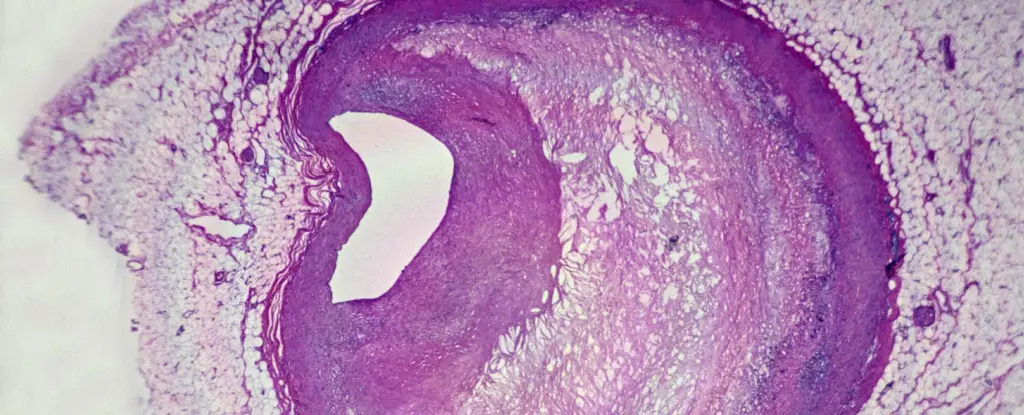In recent years, the alarming ubiquity of microplastics has transformed from a distant environmental concern into an immediate health threat that seems to infiltrate every aspect of our existence. Within our food, water, and air, these barely visible particles have now been unearthed in the least expected places: inside the human body. Recent research reveals that microplastics, alongside their even smaller equivalents, nanoplastics, are not merely external pollutants; they are circulating within our bloodstream, embedding themselves in vital organs and presenting possible dire implications on our health. Especially unsettling is the burgeoning body of evidence suggesting a connection between these plastics and increased incidences of heart disease and stroke.
New Insights into Cardiovascular Health Risks
Dr. Ross Clark, a vascular researcher at the University of New Mexico, recently presented shocking findings at the American Heart Association conference. His study sheds light on the correlation between the levels of microplastics found in arterial plaque and the risk of cardiovascular events, such as heart attacks and strokes. Clark’s team has established that diseased arteries can house up to 51 times more microplastics than their healthy counterparts. This stark difference is alarming, providing a tangible link between plastic pollution and serious cardiovascular conditions. In patients exhibiting symptoms of strokes or mini-strokes, the accumulation of these particles in artery plaque raises critical questions regarding their inviolable presence and detrimental impact on vascular health.
Disruption of Biological Mechanisms
One of the most striking revelations from Clark’s research is not just about the amounts of microplastics present but also about the potential biological ramifications on cellular function. The study observed variations in gene activity within plaque laden with high levels of microplastics compared to cleaner environments. Specifically, immune cells displayed inhibited gene expression associated with inflammation resolution, pointing towards a possible mechanism where microplastics manipulate immune responses, potentially exacerbating vascular inflammation. This shift in gene activity suggests a profound interplay between synthetic materials and innate biological processes; a subject that demands further exploration to ascertain how drastic these alterations may be in the context of chronic diseases.
The Scientific Rigor Stage
Despite the ground-breaking nature of Clark’s findings, it is pivotal to approach them with the exacting scrutiny they warrant. While Clark plans to subject his research to rigorous peer review and further replication studies, the scientific method necessitates a level of scrutiny that cannot be overlooked. The collection and analysis of samples involve complex methodologies, such as heating plaque specimens to extreme temperatures to break down the plastic compounds, which, while innovative, carries inherent risks of misinterpretation due to overlapping chemical signatures. Hence, while Clark’s team has made significant strides, the conclusions drawn from preliminary results need robust validation to withstand the challenges of scientific inquiry.
The Permanent Presence of Plastic in our Bodies
Moreover, the investigation into microplastics within our vascular systems is still in its infancy. With each new study, a grim picture unfurls about how deeply embedded these substances are in our tissues. Researchers like Dr. Jaime Ross, who reviewed Clark’s findings, emphasize the need for expanded studies to bridge the knowledge gap surrounding the implication of microplastics in human health. The ramifications of their presence extend beyond what we can currently comprehend, making it imperative that significant financial and infrastructural support is allocated to this burgeoning field of study.
Future Directions and Uncharted Territory
As Clark strives to acquire further funding for in-depth investigations, the horizon is wide open for breakthrough discoveries in understanding the health ramifications of microplastics. His proposal to extend research efforts beyond the carotid arteries hints at the potential for monumental revelations across various biological systems. Scientists must remain open to exploring the cause-and-effect relationship between microplastics and human health, particularly how they may contribute to the escalating burden of heart disease.
The urgency for comprehensive analysis cannot be overstated; our understanding of the health implications of pervasive microplastic exposure is not just of academic interest but represents a critical frontier in public health. The implications of these studies could usher in new preventive strategies, guiding healthcare policies and interventions to mitigate an emerging health crisis fueled by environmental contamination. The quest for answers is just beginning, and it may very well shape the narrative of human health in the decades to come.


Leave a Reply